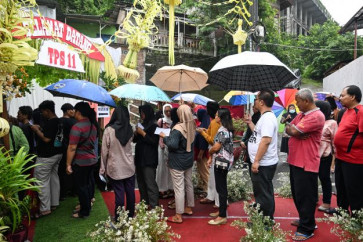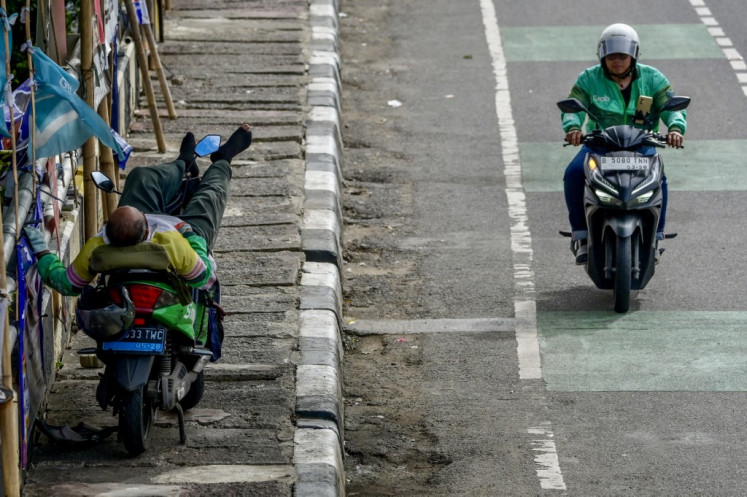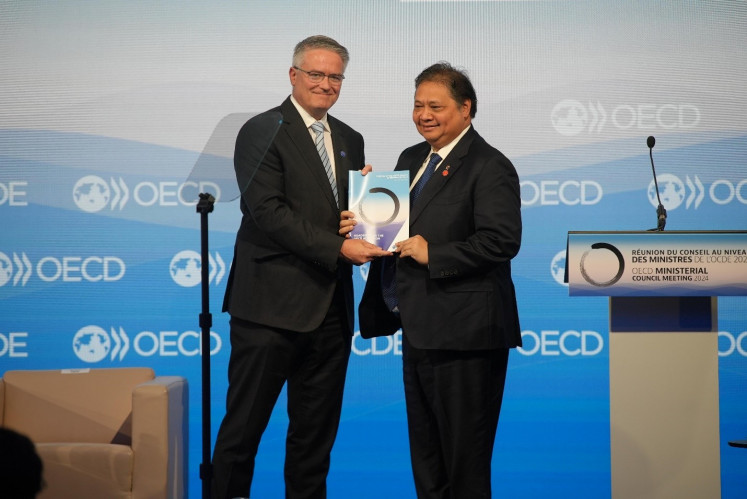Rejuvenated Kuala Lumpur welcomes athletes, visitors with confidence
Fresh look: A bird’s-eye view of Kuala Lumpur Sports City in Bukit Jalil, Kuala Lumpur, Malaysia in this undated photograph provided by Malaysian Resources Corporation Berhad (MRCB)
Change Size

F
span class="inline inline-center">Fresh look: A bird’s-eye view of Kuala Lumpur Sports City in Bukit Jalil, Kuala Lumpur, Malaysia in this undated photograph provided by Malaysian Resources Corporation Berhad (MRCB). The facilities within the sports city will be used for the 2017 Southeast Asian (SEA) Games in August.(Courtesy of MRCB)
Kuala Lumpur is fast catching up with Singapore after having been transformed into a beautiful and user-friendly venue for the 2017 Southeast Asian (SEA) Games, which will commence next month.
Kuala Lumpur Sports City (KL Sports City), a rejuvenation of Bukit Jalil Sports Complex, has been completed and is now ready to host the games from Aug. 19 to 30, stated developer Malaysian Resources Corporation Berhad (MRCB).
The Bukit Jalil complex will be the main venue for the biennial multi-sport event, which will be attended by thousands of athletes, officials, media and visitors from Brunei Darussalam, Cambodia, Indonesia, Laos, Myanmar, the Philippines, Singapore, Thailand, Timor-Leste, Vietnam and host Malaysia.
The KL Sports City project was a joint project between MRCB and Populous, a global architectural firm specializing in the design of sporting facilities, arenas and convention centers as well as the planning of major special events.
“Built almost 20 years ago, the rejuvenated facilities at the KL Sports City have been elevated to world-class standards,” S. Nalgunalingam, general manager at MRCB and KL Sports City’s project director, told the press, including The Jakarta Post, during a media visit hosted by the developer at Bukit Jalil, Kuala Lumpur over the weekend.
“Given the facilities are now compliant with the latest standards of [world track and field body] IAAF, [world soccer body] FIFA, [world hockey body] FIH and [world aquatics body] FINA, Malaysia is now ready to host to the next era of world-class sports competitions as well as showcase national and international non-sporting events,” he added.
The KL Sports City project is divided into two phases. The first was completed at a cost of 500 million ringgit (US$116.8 million). Meanwhile, the second phase, which will start next year, is worth 1.1 billion ringgit.
The project, which gave a fresh look to the Bukit Jalil National Stadium, the Axiata Arena indoor stadium, the National Aquatic Center and the National Hockey Stadium and saw large-scale plaza and infrastructure development, was finished in 15 months — significantly ahead of the initial 30 month target.
Nalgunalingam said planning played an important part as the foundation of the project.
“We had good planning, and we worked with experienced architects from Populous. They have 60 to 80 years of experience so a lot of things could be foreseen,” he said, adding that pairing experienced architects with experienced builders, like MRCB, was the secret to fast-paced work.
The project involved three months of planning.
A 23-hour working day, non-stop for 15 months, was also key to finishing the project ahead of schedule, said Nalgunalingam.
“We also have a very close relationship with the government. The [Malaysian] youth and sports minister has been actively involved in the project […]. There’s also been no delays from any stakeholders because they all understand how important the SEA Games are for Malaysia,” he added.
As MRCB, the master developer of Kuala Lumpur Sentral central business district, has extensive experience constructing buildings with transport-oriented development concepts, the KL Sports City is also easy to access and is connected with the Bukit Jalil light rail train (LRT) station.

Malaysia has a well-developed mass transportation system, including rail-based services (RapidKL LRT, KL Monorail, KTM Komuter and Mass Rapid Transit) and bus services (RapidKL buses and hop-on hop-off coach tours). The country has also welcomed app-based ride hailing services Grab and Uber.
The new look National Stadium has a newly-installed façade featuring 678 vertically stacked aluminum blades. Each blade is equipped with dynamic LED lighting, which, MRCB claims, makes the stadium the first in the world to feature programmable LED lighting on its façade.
The stadium now has a total of 85,740 seats, down from the original seating capacity of 87,411. The slight reduction was to make way for the suites. The stadium has a total of 20 suites, which are also available for corporate functions.
The Axiata Arena also has a new 203 meter façade and has a 13,840 seating capacity. Meanwhile, the 1,600 squares meter Aquatic Center has a non-combustible membrane as its new façade.
Bukit Jalil’s green space has also been increased to 30 percent of the total area, up from less than five percent previously. The area now has 1,373 trees, 102,200 low shrubs and 32,210 square meters of grass.
“The [youth and sports] ministry wanted a change in management system for the stadium. The rejuvenation project is the first ever conducted on the national stadium. Before this, we only made minor changes,” said Azman Fahmi Osman, the CEO of Perbadanan Stadium Malaysia, the stadium management board.
Osman said that approaching brands to provide equipment was a smart move into order to bring world-class standards to the stadium. “Our strategy was to avoid contractors. Instead, we went directly to brands.
“The scoreboard is by Samsung, the timing system is by Seiko, while the CCTV system is by Bosch. They offered good prices, because we went to them directly,” he added.









